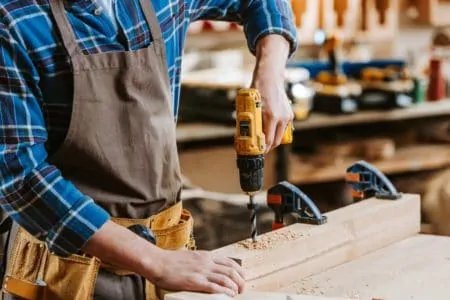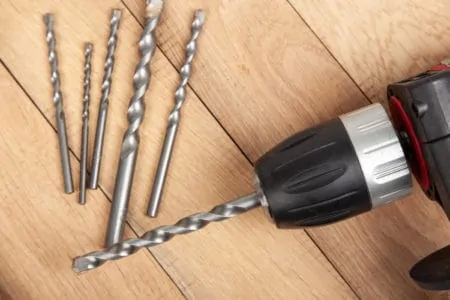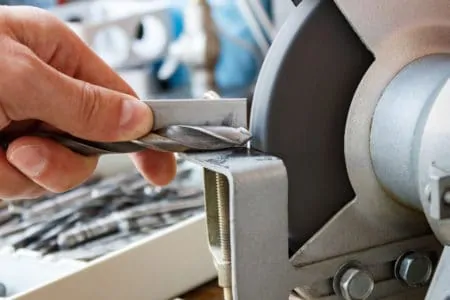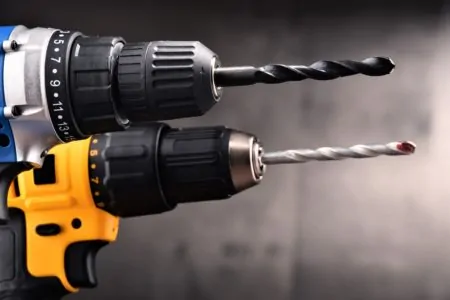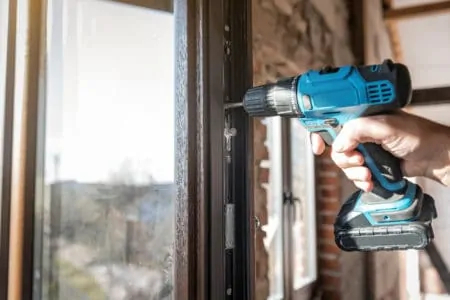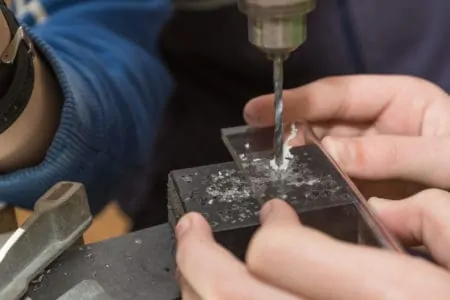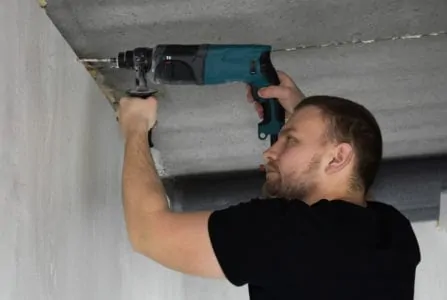As power tool technology has developed, it has given people numerous options when looking for tools for specific tasks. This also means it is important to choose the right tool, which can be difficult when they appear to be very similar.
This is the case with hammer drills and impact drivers. On the surface, these two tools have much in common, but they also have some subtle differences that will affect how you use them.
In this article, we will take a detailed look at hammer drills vs impact drivers. This should help you determine which of these two is the right tool for a specific job.
Key Takeaways
- Hammer drills are ideal for drilling through hard materials like concrete, brick, and stone, using a hammering action to make holes.
- Impact drivers provide high torque for inserting or removing screws and bolts, and are great for removing rusted bolts or driving longer screws through hard materials.
- Hammer drills have adjustable torque and use a three-jaw chuck, while impact drivers have no torque control and use a ¼-inch hexagonal socket.
- It’s best to use a hammer drill for drilling holes in concrete and other dense materials, while an impact driver is more suitable for driving screws and bolts.
Impact Driver vs. Hammer Drill Comparison Chart
| Features | Impact Driver | Hammer Drill |
| Use | Inserts or remove screws and bolts that require high torque. | Drilling through masonry and hard materials. |
| Mechanism | Rotating hammer action. | Up and down hammer action. |
| Driving Force | Electric. | Electric/Electro-pneumatic. |
| Torque | No torque control. | Adjustable torque. |
| Design | Short and stubby. Similar to electric screwdrivers. | Similar to rotary drills. Long handles and nose. Rotary hammer drills are bulky with two handles. |
| Speed | 2,000 to 3,500 RPM | 2,000 to 3,000 RPM |
| Chuck | ¼-inch hexagonal socket | 3-jaw/SDS chuck |
What Is a Hammer Drill?
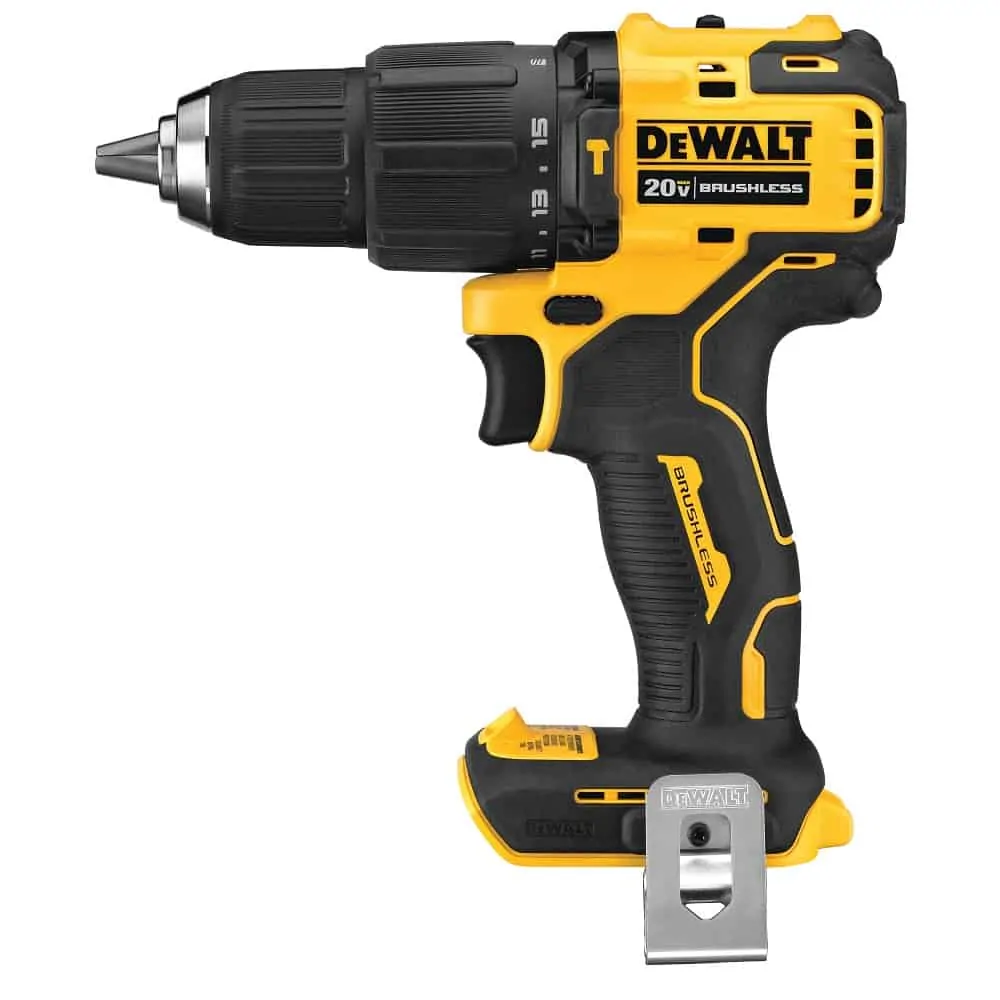
A hammer drill is a handheld power tool that uses a hammering action to make holes in tough material. The drill bit rotates in addition to pushing back and forth, allowing it to cut into rock, concrete, metal, and masonry. This hammer action is the key difference compared to an impact driver.
In terms of a hammer drill vs an impact driver, an impact driver can also be used to drill relatively hard materials. However, it is best suited to driving screws and bolts into solid matter.
Typically, a drill from your local DIY store will have a switch that enables you to switch between rotary and hammer modes. On a construction site, however, you are more likely to find a dedicated hammer drill that can cope with heavy-duty work.
What Do You Use a Hammer Drill For?
Hammer drills drive holes in concrete, brick, stone, and other dense materials. You can also use a hammer drill to make holes in softer materials such as wood, but you won’t need to use one if you already have a rotary drill.
Hammer drills use rapid movements back and forth to cut through material more effectively, in contrast to a standard rotary drill that can only spin. As a result, they can make holes in materials that a standard drill would be unable to penetrate.
Do You Need a Hammer Drill for Concrete?
If you want to drill concrete, you will need a hammer drill. This is especially true if you are drilling through old concrete, which is usually harder and contains rocks and pebbles that can damage standard drills.
For smaller tasks, such as hanging a picture frame or mirror on an interior concrete wall, you can probably use a rotary drill and a masonry drill bit. However, drill slowly to avoid burning out the motor.
Some impact drills have hexagonal attachments to improve their ability to drive through masonry.
Pros
- Drills through hard materials
- Can switch from rotary to hammering action
- More versatile
- High-torque
- Can drive screws and bolts
Cons
- More expensive
- Heavier
- Better suited to drilling
- Possible to lose the chuck key
What is an Impact Drill/Driver?
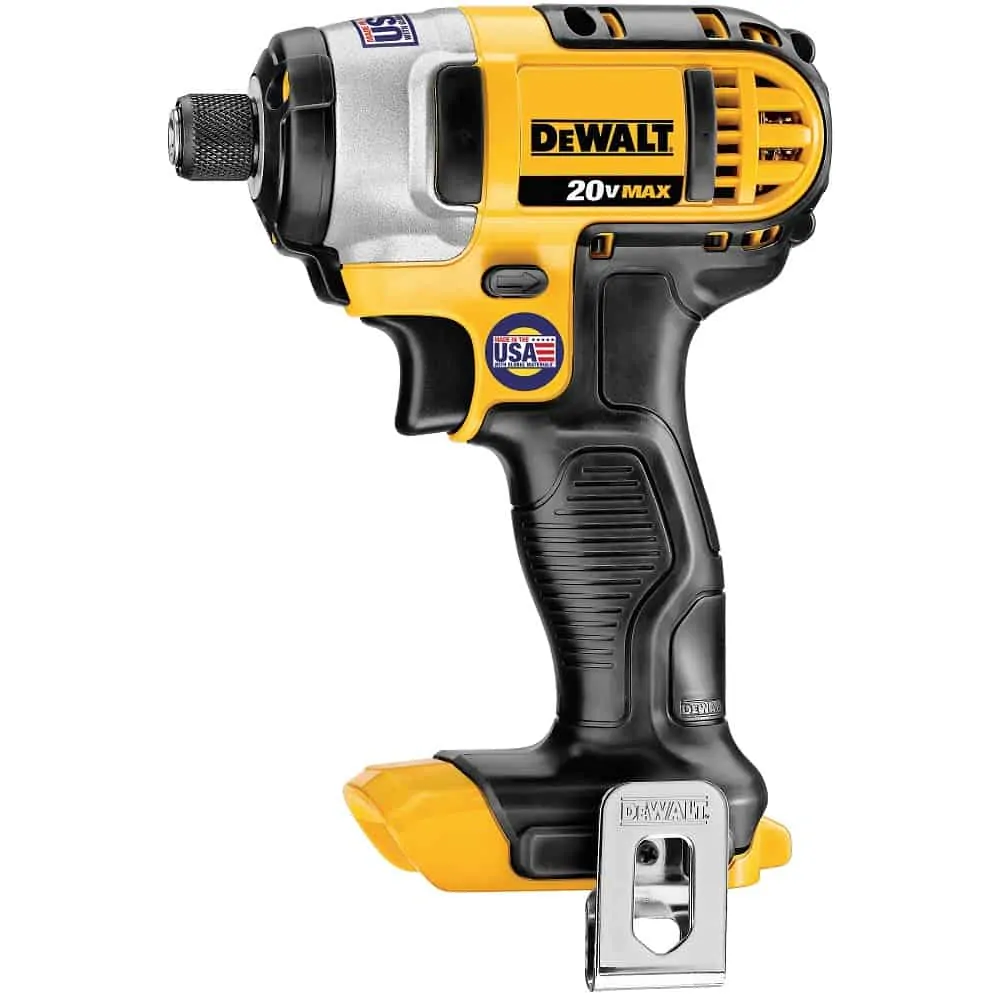
An impact drill is a powerful tool that operates similarly to a hammer drill. Impact drivers are smaller with stubby noses. Both devices use percussive power but an impact driver also utilizes rotation, adding extra torque when required.
This important difference makes impact drivers the perfect choice for removing rusted bolts and screws. They are also excellent for driving thicker or longer screws through hard materials, such as concrete.
Another difference between hammer drills and impact drivers is that hammer drills use a three-jaw chuck key to secure drill bits. An impact driver has a quarter-inch hexagonal socket.
What Do You Use an Impact Driver For?
If you have a rusted bolt that you can’t remove or a screw that seems impossible to get out, an impact driver can provide the rotational force needed to dislodge them. Impact drivers are typically found in garage workshops. They are excellent at removing over-torqued bolts from vehicles.
Can an Impact Drill Go Through Concrete?
An impact driver can penetrate concrete but only if you intend to drill a quarter-inch hole. As impact drills are high-torque power tools, they have the strength required to make small holes in very hard surfaces. Even so, we still recommend using a hammer drill if possible for better results.
If you only want to drill one or two small holes in a concrete surface, you might be tempted to use an impact driver. Before you do, make sure you follow these basic steps:
1. Use an Impact Drill Masonry Bit
Get a complete set of masonry drill bits so you can start by drilling a small hole and gradually increasing the size.
2. Mark the Center of the Hole
Mark the center of the hole and use your smallest masonry bit. Press gently and when you feel the drill bit start to bite, reduce the pressure.
3. Increase Drill Bit Size
If the bit starts to bind in the hole, move up to your next drill bit size. Like drilling into concrete with a hammer drill, if you hit any obstructions, place a masonry nail against them and hit it with a hammer a few times to break the blockage apart.
4. Keep Increasing Drill Bit Size
Steadily increase the drill bit size by one-eighth of an inch until the hole reaches your required diameter and depth.
This method of using an impact drill to cut through concrete is not ideal. It is time-consuming, requires a lot of effort, and is less precise than using a hammer drill.
One of the most important aspects of DIY is knowing which tools to use for a specific job. If you want to drill through concrete, use a hammer drill. The hammering action and rotational power combined with a masonry drill bit will be far more suitable for the task.
Pros
- High-torque
- Drives bolts and screws
- Removes rusted bolts and screws
- Can be used as a drill
- No chuck key
Cons
- Can’t drill all materials
- More suitable for driving screws
- Less precise than a hammer drill
- Not very versatile
Can an Impact Driver Be Used as a Hammer Drill?
You can use an impact driver as a hammer drill to a certain extent. It will drive hexagonal masonry drill bits into moderately hard materials. They can also be used to drill through hardwood and other tough materials. However, just because you might be able to do this with your impact drill, it doesn’t mean you should.
By far the best tool for drilling through dense material is a hammer drill. Impact drivers are high-torque tools for driving screws and bolts into dense stock but they shouldn’t be used to drill holes in hard materials such as concrete.
FAQs
Deep Impact or Hammer Time?
Hammer drills are more expensive than impact drivers, so you shouldn’t buy one unless you have a specific requirement to drill into very hard materials. A hammer drill is less likely to be used for routine DIY work around your home than an impact driver, so you can save money by renting a hammer drill when you need one.
Drilling into masonry requires a precision tool to avoid damaging the surrounding area. If you need a tool to twist out a rusted bolt or screw, an impact driver is the better choice. They are cheaper, easier to use, and far more useful for routine DIY tasks.
